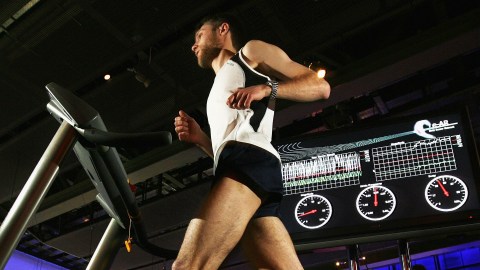The treadmill was invented as a torture device

Photo credit: Dan Kitwood / Getty Images
Sometimes an invented object’s utility only becomes apparent after time. The Post-it note is an excellent example. Research scientists at 3M sat on the Post-it’s “useless” adhesive technology for several years before a series of happy accidents spurred the realization that they had invented one of the world’s great office-supply products.
Other inventions with similarly circuitous origin stories include microwaves (a byproduct of radar), Teflon (used by the Manhattan project), and Coca-Cola (a failed headache medicine).
Back in the 1800s, the forerunner to the treadmill was invented so prison inmates could make themselves useful by turning a large paddlewheel by stepping on its spokes.
Here’s another: treadmills. A ubiquitous component of the modern gym, the very first treadmills were used as tools for punishment. Here’s how Medical Daily sums up the history:
“Back in the 1800s, the forerunner to the treadmill was invented so prison inmates could make themselves useful by turning a large paddlewheel by stepping on its spokes. The wheel would in turn pump out water, crush grain, or power a mill: the source of the name ‘treadmill.’ Prisoners were often forced to spend up to six hours a day on the wheel, which was the equivalent of climbing about 5,000 to 14,000 feet.”
So the treadmill was more or less a torture device, although I suppose that depends on whether climbing Mount Whitney every day constitutes torture. Perhaps “punitive tool” works better. Either way, no one in the 1800s was signing up for a membership.
This informative video produced by TED-Ed offers the whole story of the treadmill’s dark and twisted past:
The key takeaway here? Innovation is not a clear-cut process nor does it require new discoveries. It wasn’t until the 1970s that we found the best use for our century-old treadmill technology. The Post-it didn’t come to fruition until a research scientist discovered that a sticky bookmark would make it easier to sing hymns at church. Each of these examples was the product of rethinking something old rather than seeking something new.
So if you’re looking to innovate, perhaps consider the rethink approach.
—
Robert Montenegro is a writer, playwright, and dramaturg who lives in Washington DC. His beats include the following: tech, history, sports, geography, culture, and whatever Elon Musk has said on Twitter over the past couple days. He is a graduate of Loyola Marymount University in Los Angeles. You can follow him on Twitter at @Monteneggroll and visit his po’dunk website at robertmontenegro.com.
Read more at Medical Daily.





